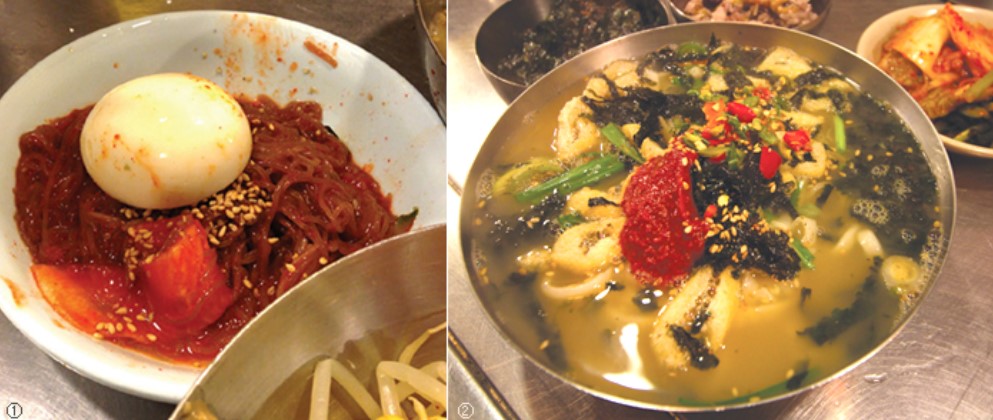자유게시판
Namdaemun's Kal-guksu Alley
- luckin
- 2024.10.04
When eating out, how do you choose what to eat? Some will take into consideration a nice interior and tasty food, but those on a tight budget will say "low prices and large portions" are what really matter. Namdaemun's Kal-guksu Alley is a place where many eateries operate with those two factors in mind.

You can smell the cooking even from the entrance.
Namdaemun's Kal-guksu Alley began to take form following the Korean War. Right after the Korean War, people sold leftover food from the U.S. Army base here, and then began to sell kal-guksu as well. In the olden days, there were no roofs on most of the restaurants so diners would have to eat under the protection of their own umbrellas. Namdaemun and Myeongdong have come a long way since then, and the area is now full of dining hot spots. Namdaemun Market, where Kal-guksu Alley is located, is Seoul's oldest traditional market with over 10,000 shops. Namdaemun Market is a place where once can feel the vibrancy of life.

Kal-guksu Alley is located near exit 5 of Hoehyeon Station (subway line 4). Walk towards the right for 50m then on your left, a steam filled traditional market will come into view. Kal-guksu restaurants stretch out on either side. Bori-bap (barley rice), naengmyeon (cold buckwheat noodles), and glutinous rice; dishes that are great as either a meal or a snack. In Kal-guksu Alley, kal-guksu's noodles are famously all made by hand. Everything from kneading the dough to cutting the noodles is done by hand. The noodles are made, then cooked in a broth made of anchovies. As a finishing touch, kal-guksu is then topped with yubu (fried tofu), crushed laver, and sesame seeds.
Bibimbap with barley and glutinous rice is just the start. On the table there will be shredded radish, water celery, bean sprouts, and lettuce. You then fill your bowl with these vegetables to your heart's content and mix it all with the barley and rice. Orders take less than 1 minute to be filled. Bibimbap also comes with a spicy doenjang-guk (soybean paste soup). Perhaps the most surprisingly thing about ordering in a Korean restaurant is the large amount of free dishes that are included with each meal. An order of naengmyeon includes a side of kal-guksu. An order of kal-guksu includes a side of naengmyeon, Bori-bap (barley rice) is about 500 won more expensive than glutinous rice, but it comes with a generous portion of both naengmyeon and kal-guksu. All this will run just 5~6,000 won. However, at lunch time, it can be extremely difficult to get a seat anywhere. Additionally, at peak times, complimentary dishes may run out.
In the Kal-guksu Alley's cramped space, it's necessary to sit shoulder to shoulder with strangers while eating. However, eating so close to your fellow man helps to make companions out of strangers






